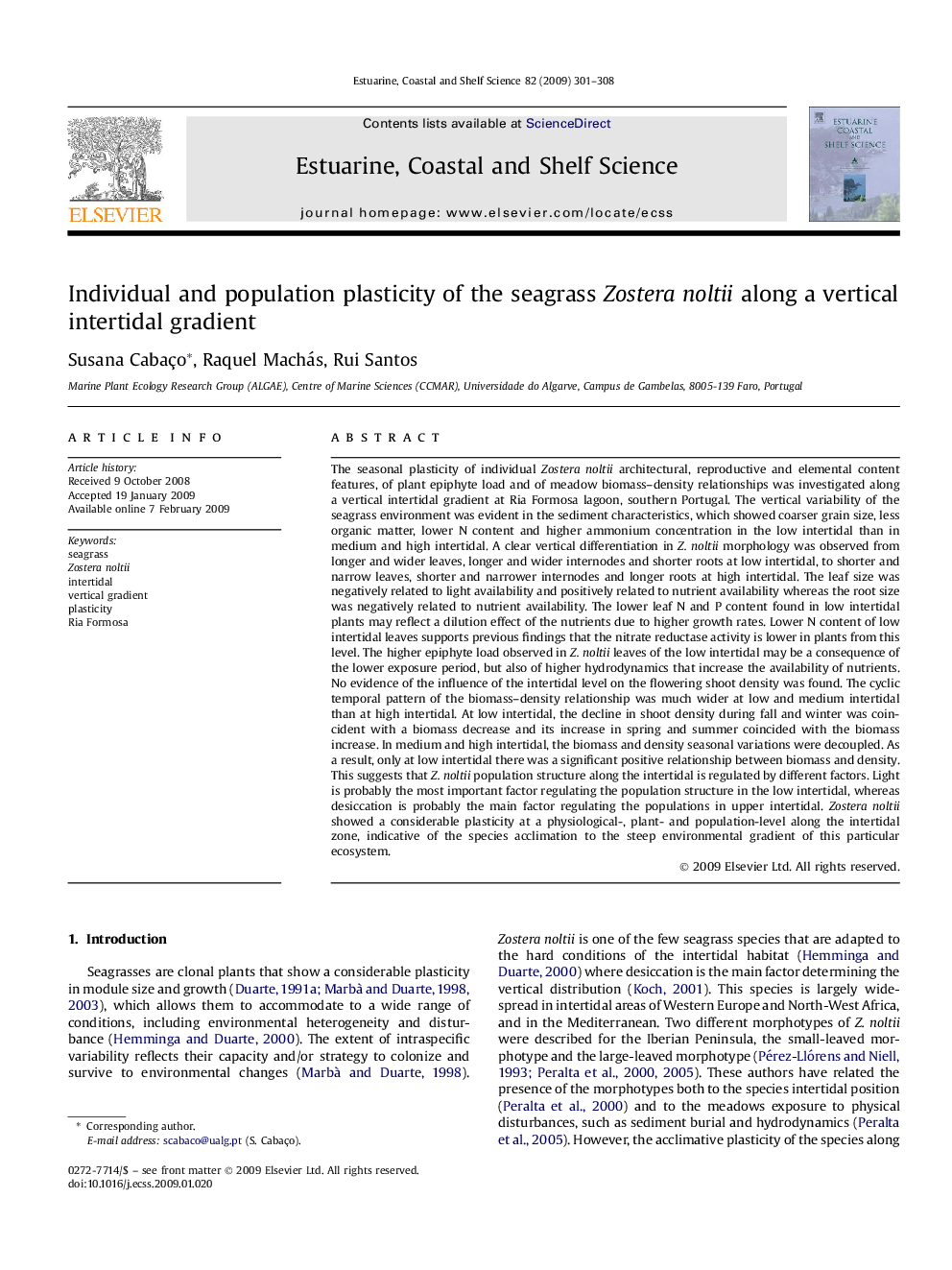| کد مقاله | کد نشریه | سال انتشار | مقاله انگلیسی | نسخه تمام متن |
|---|---|---|---|---|
| 4541240 | 1326714 | 2009 | 8 صفحه PDF | دانلود رایگان |

The seasonal plasticity of individual Zostera noltii architectural, reproductive and elemental content features, of plant epiphyte load and of meadow biomass–density relationships was investigated along a vertical intertidal gradient at Ria Formosa lagoon, southern Portugal. The vertical variability of the seagrass environment was evident in the sediment characteristics, which showed coarser grain size, less organic matter, lower N content and higher ammonium concentration in the low intertidal than in medium and high intertidal. A clear vertical differentiation in Z. noltii morphology was observed from longer and wider leaves, longer and wider internodes and shorter roots at low intertidal, to shorter and narrow leaves, shorter and narrower internodes and longer roots at high intertidal. The leaf size was negatively related to light availability and positively related to nutrient availability whereas the root size was negatively related to nutrient availability. The lower leaf N and P content found in low intertidal plants may reflect a dilution effect of the nutrients due to higher growth rates. Lower N content of low intertidal leaves supports previous findings that the nitrate reductase activity is lower in plants from this level. The higher epiphyte load observed in Z. noltii leaves of the low intertidal may be a consequence of the lower exposure period, but also of higher hydrodynamics that increase the availability of nutrients. No evidence of the influence of the intertidal level on the flowering shoot density was found. The cyclic temporal pattern of the biomass–density relationship was much wider at low and medium intertidal than at high intertidal. At low intertidal, the decline in shoot density during fall and winter was coincident with a biomass decrease and its increase in spring and summer coincided with the biomass increase. In medium and high intertidal, the biomass and density seasonal variations were decoupled. As a result, only at low intertidal there was a significant positive relationship between biomass and density. This suggests that Z. noltii population structure along the intertidal is regulated by different factors. Light is probably the most important factor regulating the population structure in the low intertidal, whereas desiccation is probably the main factor regulating the populations in upper intertidal. Zostera noltii showed a considerable plasticity at a physiological-, plant- and population-level along the intertidal zone, indicative of the species acclimation to the steep environmental gradient of this particular ecosystem.
Journal: Estuarine, Coastal and Shelf Science - Volume 82, Issue 2, 10 April 2009, Pages 301–308